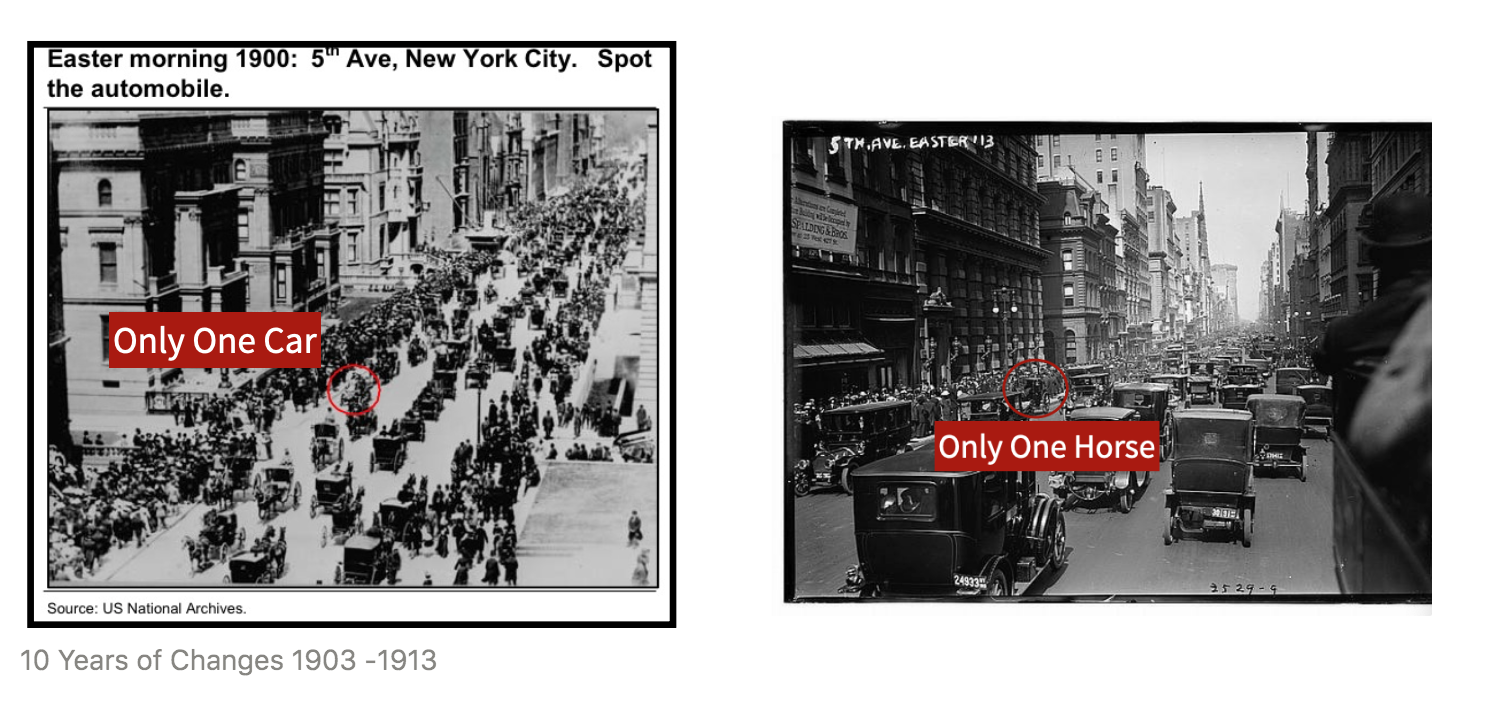"People overestimate what can be done in one year, and underestimate what can be done in ten."
- Bill Gates
Walking to Central Park during one of my business trips to New York, I passed a row of crazy expensive hotels lining Park Avenue. All of these hotels shared the same characteristics. They all had quite opulent facades, and each one was guarded by doormen that all seemed to scream this is a special place that I do not belong to. I saw one doorman wearing a uniform that looked straight out of Middle Ages England, complete with white gloves.
Everything I passed on that walk signaled to me that this place has history and is not afraid to show it. The barons of industry of 1900, like Rockefeller and Carnegie, all still have their fingerprints there to see if you stop and look around. They were from a different era, a time when money and influence brought decades of stability and security. A time when changes were minimized for the sake of stability.
I saw many buses packed with tourists from overseas, throngs of tourists busy moving from one site to another. I can see why the locals hate the tourists that ruin their lovely park with their selfies and requests to get into the fake horse carriages.
It is easy to blame the tourists, however, the locals who spend most of their time walking from their expensive penthouses to their high rise offices fail to notice as well. They are just simply too busy on their high tech phones to notice that this is all a facade of the old days.
This experience reminded me of a pair of photos I saw once, while researching the subject of changes in the library.

The photos were taken in the same location only ten years apart. The first photo is a picture of a crowded New York City street in the year 1900. There is only one car on the road, while the rest of the people are in their horse and buggies.
Fast forward just ten years, to 1913, and the scene is completely reversed. There is now only one horse on the road; the rest are all cars. This is astonishingly fast considering that horses had been humans’ primary mode of transportation for 3,000 years.
Compared to three centuries, ten years is like the changes happened overnight. The horse carriage almost completely disappeared, basically overnight. Let that sink in for a moment.
Now, think about how it wasn’t just the horses themselves that disappeared. It was also all the businesses associated to supporting horses as a mode of transportation. All the businesses that provided food to the horses, the garages that sheltered the horses, the people who fixed all of the carriages, etc. A lot of business must have disappeared in the span of just ten years.
We are undergoing a similar transformation now. I am not just talking about the coronavirus of 2020. The pace of change is now so much faster that what happened in 1900. With the digital revolution, we all now have access to instant news at our finger tips via smartphones. New ways of doing business are invented almost every month. It only gets faster.

Up until now, the rate of human adaption of new technologies has stayed above the rate of change brought upon us by the new technologies. This has been true through the first Industrial Revolution from 1760-1840, the second “Technological” Revolution of 1870-1914, and it was even true at the start of the “Digital” Revolution which began in 1990. Humans have been able to keep up with the changes.
But now, we are right at a crucial moment where a fourth technological advance is just beginning. It will continue to advance, and humans, for the first time in history, won’t adapt with it. This is the “Automation” Revolution.
Automation Revolution
The reason for this is that the Automation Revolution brings with it an explosion of data that will soon eclipse the ability of humans to understand it, let alone keep up with it. We are at a point now where more data was generated in the last two years than in all of human history before that.
It is a mountain of changes.
That’s why, in order to lead a successful business in the age of the fourth technological revolution, the Automation Revolution, it’s vital to incorporate Artificial Intelligence.
Our own interesting time
Like the internet, AI will fundamentally change the fabric of our society. AI "will impact every aspect of people’s lives,” head of Google AI Fei Fei Li has said. As we have seen with the early story about the horse carriages, this change doesn't just apply to the big internet businesses. It also applies to small business, mom and pop businesses, and all other businesses that were previously unaffected by the digital revolution.
In the near future , these changes will create two types of companies: companies that use AI and companies that don't. Companies that use AI will dominate their industry. The companies that don’t will fail. There will be no second place.
As a business owner myself, I wonder how many small business will be able to survive this transition. I implore you to take the time and start looking inward at your own business and life to prepare for this onslaught of changes while time is available.
It is no longer safe to refrain from taking action. The time to be decisive is now. More than ever.